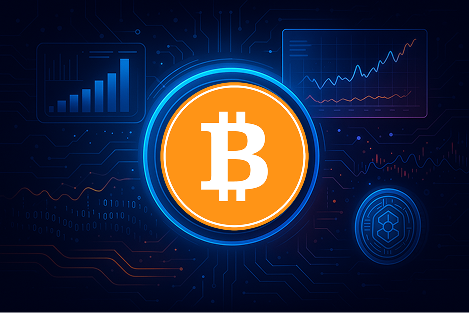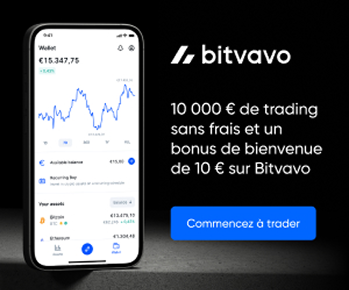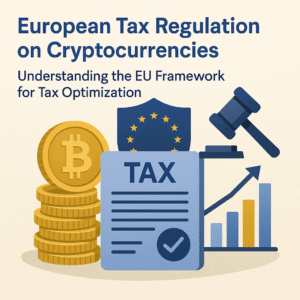Chainlink Price, Crypto Analysis, and LINK Token Functionality

Explore Chainlink: decentralized oracle network, LINK token utility, technical insights, and its pivotal role in DeFi and blockchain interoperability.
Introduction
Chainlink (LINK) has emerged as a cornerstone in the blockchain ecosystem, providing decentralized oracle solutions that connect smart contracts with real-world data. This article delves into Chainlink’s price dynamics, technical architecture, and investment potential.Key takeaways
- Short-term volatility: Influenced by market trends and technological developments.
- Key influencing factors: Regulatory changes, adoption rates, and network upgrades.
- Long-term growth potential: Strong, given its pivotal role in DeFi and cross-chain interoperability.
- Positioning among major cryptos: Distinct as a leading oracle provider, complementing platforms like Ethereum and Polkadot.
Overview of Chainlink
Symbol: LINK Category: Decentralized Oracle Network Primary Function: Bridging on-chain smart contracts with off-chain data sources. Project Objective: Chainlink aims to securely connect smart contracts with external data, enabling them to interact with real-world events and information. Contextual Background: In the blockchain realm, smart contracts are self-executing agreements with the terms directly written into code. However, they inherently lack access to external data, limiting their applicability. Chainlink addresses this limitation by providing decentralized oracles that fetch and verify off-chain data, ensuring smart contracts can respond to real-world inputs. Chainlink’s architecture ensures data integrity through a network of independent node operators who retrieve and validate data from various sources. This decentralized approach mitigates the risks associated with single points of failure, enhancing the reliability of smart contracts across diverse applications.How Chainlink Works
Chainlink operates as a decentralized network of oracles, enabling smart contracts to securely interact with external data sources. Here’s a breakdown of its technical framework: Blockchain Type & Consensus: Chainlink is built on the Ethereum blockchain and utilizes a Proof-of-Stake (PoS) consensus mechanism, ensuring energy efficiency and scalability. EVM Compatibility: Being Ethereum-based, Chainlink is fully compatible with the Ethereum Virtual Machine (EVM), facilitating seamless integration with Ethereum smart contracts. Technical Specifics:- Interoperability: Chainlink’s Cross-Chain Interoperability Protocol (CCIP) allows for secure communication between different blockchain networks.
- Oracles: Decentralized nodes fetch and verify data from off-chain sources, providing it to smart contracts.
- Layer 2 Solutions: Chainlink supports Layer 2 networks like Arbitrum and Optimism, enhancing transaction throughput and reducing costs.
- Payment: Compensates node operators for data retrieval and validation services.
- Staking: Enhances network security by requiring node operators to stake LINK tokens, aligning their incentives with network integrity.
- Governance: Holders may participate in protocol governance, influencing future developments.
History and Project Inception
Launch Date: September 2017 Geographical Origin: Cayman Islands Key Milestones:- 2014: Foundation of SmartContract, the precursor to Chainlink.
- 2017: Release of the Chainlink whitepaper by Sergey Nazarov, Steve Ellis, and Ari Juels.
- 2017: Successful ICO raising $32 million, distributing over 350 million LINK tokens.
- 2019: Launch of Chainlink’s mainnet on Ethereum, marking the operational commencement of its oracle network.
- 2021-Present: Expansion through partnerships with major entities like Google, Oracle, and SWIFT, solidifying its position in the blockchain ecosystem.
Founders and Team
Founding Team:
- Sergey Nazarov: Co-founder and CEO of Chainlink Labs, with a background in building decentralized applications and a focus on bridging blockchain technology with real-world applications.
- Steve Ellis: Co-founder and CTO, bringing expertise in software engineering and a history of developing secure and scalable systems.
- Ari Juels: Technical advisor, professor at Cornell University, and co-author of the Chainlink whitepaper, contributing academic rigor to the project’s foundation.
What Makes [Nom cryptomonnaie] Unique?
Unique Features and Use Cases of Chainlink
Innovative Use Cases:
- Decentralized Finance (DeFi): Chainlink provides real-time price feeds to platforms like Aave and Synthetix, ensuring accurate and tamper-proof data for lending, borrowing, and derivatives trading.
- Insurance: Automates claim processing by supplying smart contracts with verified data on events like flight delays or natural disasters.
- Gaming and NFTs: Utilizes Verifiable Random Function (VRF) to ensure fairness in gaming outcomes and NFT distributions.
- Supply Chain Management: Tracks and verifies the movement of goods, enhancing transparency and trust in logistics.
Unique Value Proposition:
Chainlink stands out by offering a decentralized and secure method for smart contracts to access off-chain data. Its robust network of oracles ensures data accuracy and reliability, critical for the functionality of various blockchain applications. The protocol’s adaptability allows integration across multiple blockchains, enhancing its utility and reach.
Implicit Comparison with Similar Projects:
While other oracle solutions like Band Protocol and API3 exist, Chainlink’s extensive network, proven reliability, and wide adoption give it a competitive edge. Its commitment to security, decentralization, and continuous innovation positions it as a leader in the oracle space.Conclusion and Future Outlook for Chainlink
Chainlink has established itself as a critical infrastructure component within the Web3 ecosystem, providing reliable solutions to the challenges faced by smart contracts. Through its decentralized oracle network, it ensures secure access to off-chain data, making it indispensable for decentralized finance, insurance, and asset tokenization applications. Looking ahead, Chainlink’s prospects remain strong. The gradual rollout of staking, expansion of its Cross-Chain Interoperability Protocol (CCIP), and the growth of services like Verifiable Random Function (VRF) and Proof of Reserve demonstrate its commitment to innovation. As the decentralized application landscape evolves, Chainlink’s robust and scalable value proposition positions it as a foundational element for the future of blockchain technology.
FAQ
- What is the purpose of the Chainlink (LINK) token? The LINK token is used to compensate oracle operators, ensure data reliability, and secure the network through staking mechanisms.
- Is Chainlink a good investment? Chainlink addresses a critical need by connecting smart contracts to real-world data, and its increasing adoption underscores its long-term potential.
- How does Chainlink differ from Band Protocol? Chainlink operates on Ethereum and offers a broader range of services, including VRF and CCIP, whereas Band Protocol is built on Cosmos and focuses on different scalability features.
- Where can I store my LINK tokens? LINK tokens can be stored in any ERC-20 compatible wallet, such as MetaMask, Ledger, Trezor, Trust Wallet, or Coinbase Wallet.
- Is the Chainlink project secure? Yes, Chainlink employs a decentralized architecture, open-source code, regular audits, and staking incentives to maintain high security standards.
- How can I purchase Chainlink (LINK)? LINK is available on major exchanges like Binance, Kraken, and Coinbase, and can be traded for fiat currencies or other cryptocurrencies.
Disclaimer :
Trading is risky and you may lose all or part of your capital. The information provided does not constitute financial advice and/or an investment recommendation
Top-Rated Platforms to Trade Crypto
Explore Our Financial Views on the Market
Crypto News & Insights
Digital Assets Forum 2026 returns to
The Digital Assets Forum (DAF), one of Europe’s most respected...
Blockchain and Cryptocurrency Conference (B2C’ 2025):
The Blockchain and Cryptocurrency Conference (B2C’ 2025) is scheduled for...
European Tax Regulation on Cryptocurrencies: Understanding
The regulation of the cryptocurrencies market in the European Union...













